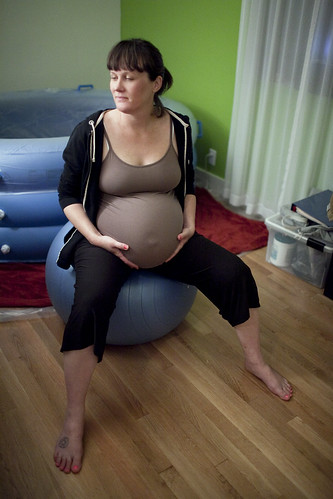Planning a Home Birth
Planning home birth isn’t for everyone, but the truth is that neither is a hospital birth. There are many options to choose from when you put together your birthing plan, and this article will help you to understand more about births that happen at home vs. in a hospital.
Home Birth Statistics
Despite the strong concerns that some medical professionals have about home births, the statistics have shown that there was no risk increase to the mother or baby when delivery is assisted by a midwife and occurs at home. One specific study was completed in 1998 in British Columbia. (Janssen PA, Lee SK, Ryan EM, Etches DJ, Farquharson DF, Peacock D, Klein MC. – Centre for Community Health and Health Evaluation Research, BC Research Institute for Children’s and Women’s Health, Vancouver)
This study looked at several thousand women, and found that 12.1% of the women who intended to deliver at home were transferred to hospital. Even when the transfer occurs, there is still a smaller liklihood for certain medical interventions:
- epidural (4.7%),
- episiotomy (2.1%),
- forceps (1.0%),
- vacuum extraction (0.6%)
- and caesarean section (3.7%)
 Comparing these rates with US women who give birth in a hospital, you will see that the interventions are much lower. The conclusion of this data is that planning a birth at home is a good option for low risk women in North America, if they are using certified professional midwives. Planning an at-home birth had been associated fewer occurrances of medical intervention. Also, the death rate for both babies and mothers with home births was the same as the hospital death rate for low risk mothers. (Outcomes of planned home births with certified professional midwives: large prospective study in North America. Johnson KC, Daviss BA. – Surveillance and Risk Assessment Division, Centre for Chronic Disease Prevention and Control, Public Health Agency of Canada, PL 6702A, Ottawa, ON, Canada K1A OK9)
Comparing these rates with US women who give birth in a hospital, you will see that the interventions are much lower. The conclusion of this data is that planning a birth at home is a good option for low risk women in North America, if they are using certified professional midwives. Planning an at-home birth had been associated fewer occurrances of medical intervention. Also, the death rate for both babies and mothers with home births was the same as the hospital death rate for low risk mothers. (Outcomes of planned home births with certified professional midwives: large prospective study in North America. Johnson KC, Daviss BA. – Surveillance and Risk Assessment Division, Centre for Chronic Disease Prevention and Control, Public Health Agency of Canada, PL 6702A, Ottawa, ON, Canada K1A OK9)
In the Netherlands, a study concludeed that when women plan a home birth for their first child, they have safer pregnancy outcomes when they choose to have another home birth for their their second child instead of planning the birth in a hospital. (Outcome of planned home and planned hospital births in low risk pregnancies Prospective study in midwifery practices in The Netherlands. Wiegers TA, Keirse MJ, van der Zee J, Berghs GA.)
What Makes a Home Birth Preferable?
Even though there is more technology in the hospital, it does not necessarily mean that there will be better outcomes. In fact, one midwife commented on the fact that if the hospital has some kind technology or fancy machine, then the hostipal often finds a way to use it. When a hospital doesn’t have expensive machines, they do just fine without them.
Dilation is Improved When the Mother is Comfortable
During her the birthing process, it is essential for the mother to be as comfortable as possible because then she will dilate more easily. Ina May compared the experience of birthing to the process of going to the bathroom. A person must relax for it to happen, and it shouldn’t be forced. Likewise, women should consider where they feel comfortable to give birth, and not base the decision on where they feel obligated to give birth. Some women choose to give birth at home, other women prefer a birthing center, and some women decide that a hospital is best for them. Consider all of your options, and understand that a birth at home or in a birthing center is perfectly fine if that’s what you prefer.
Fewer Birthing Interventions
As you can see in the study, there are some situations where the woman plans an at-home birth and then is transferred to a hospital. Even when a home birth doesn’t go as planned and a hospital transfer is necessary, interventions rates are extremely low, with the cesarean rate being only 3.7%. Considering the fact that the average cesarean rate in the United States is close to 30%, 3.7% is a drastic decrease. One reason why the interventions are less likely is because most hospitals are in the business to make a profit. Which means that more interventions during the birthing process, results in more profits overall.
An interesting note: some countries allow women go to a hospital to give birth without a doctor. When this happens, the woman is able to have the comfort of trusting her body and the birth process, and still put her mind at ease because of the back-up of the hospital equipment in case of emergency. It is good to ask ourselves why our culture has lost trust in the birth process, and why in hospitals create an emergency out of a natural process in order to “manage” a women’s birth.
Photo Credit: eyeliam from







